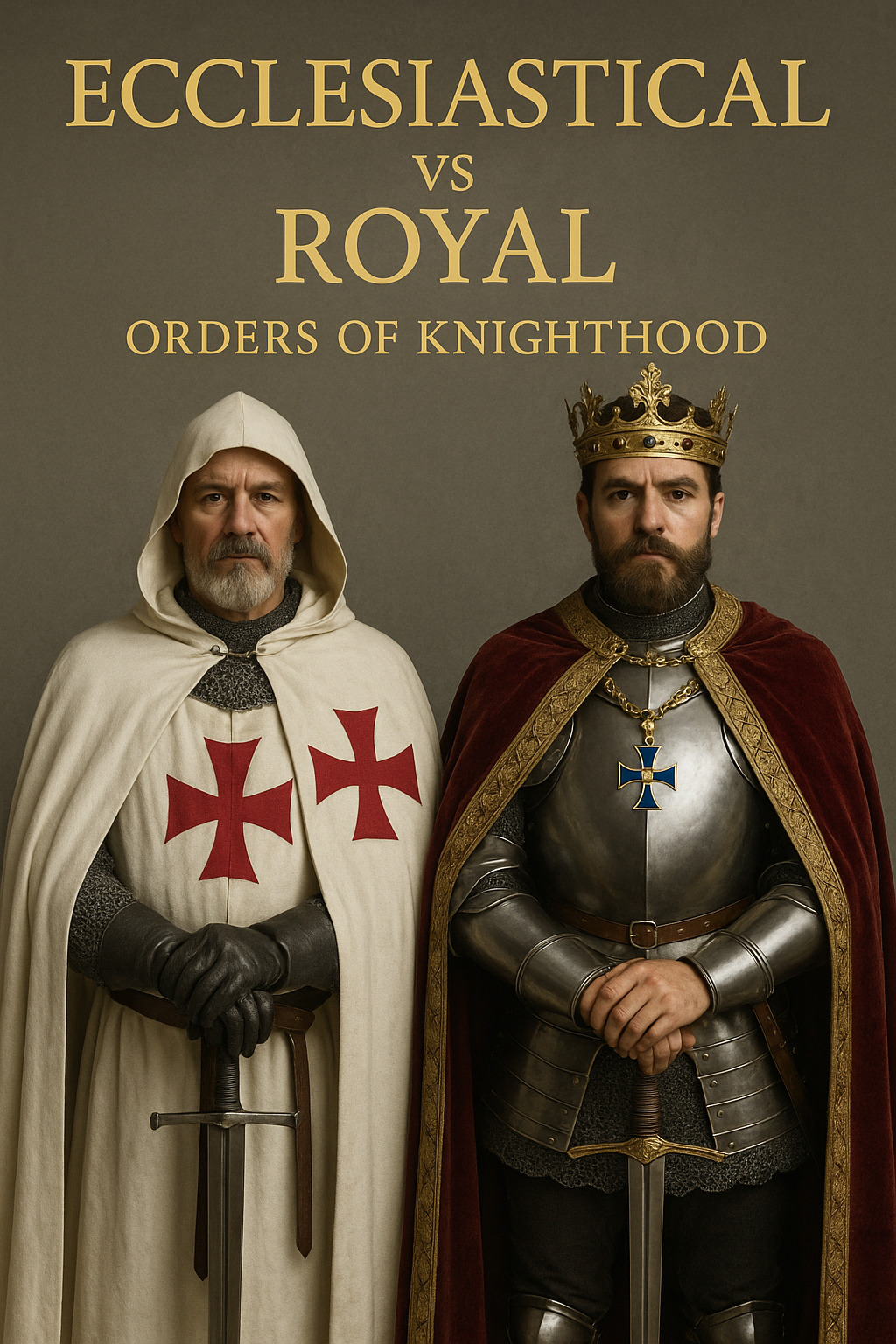Two pillars of knighthood
Throughout history, two pillars of knighthood have shaped the chivalric tradition: Ecclesiastical Orders and Royal Orders of Chivalry. While both uphold honour, service, and ceremonial grandeur, their origins, authority, and missions differ in profound and meaningful ways.
Ecclesiastical Orders—such as the Order of the Temple (Templars), Order of Saint John (Hospitallers), or the Order of Saint Lazarus—are founded upon spiritual service, guided by Christian virtues and ecclesial leadership. Their allegiance is not to crown, but to faith and the Church. These Orders focus on charity, pilgrimage protection, healing, and spiritual discipline, continuing their legacy today through humanitarian works under Christian banners.
In contrast, Royal Orders, like the Order of the Garter (England), Order of the Golden Fleece (Burgundy/Spain) or the Order of Saint Michael (France), were born from the power of monarchs—used to reward loyalty, valor, and service to the crown. They are secular in governance, though often embrace Christian iconography, and typically remain heraldic honours bestowed upon nobles, statesmen, and royal allies.
Similarities? Both are rooted in medieval chivalry, rich in ritual, symbolism, and a shared commitment to upholding the ideals of duty, honour, and legacy.
Differences? One kneels to the altar, the other to the throne.
Together, they form the twin swords of chivalry—one spiritual, one sovereign—still cutting paths of service in today’s world.

